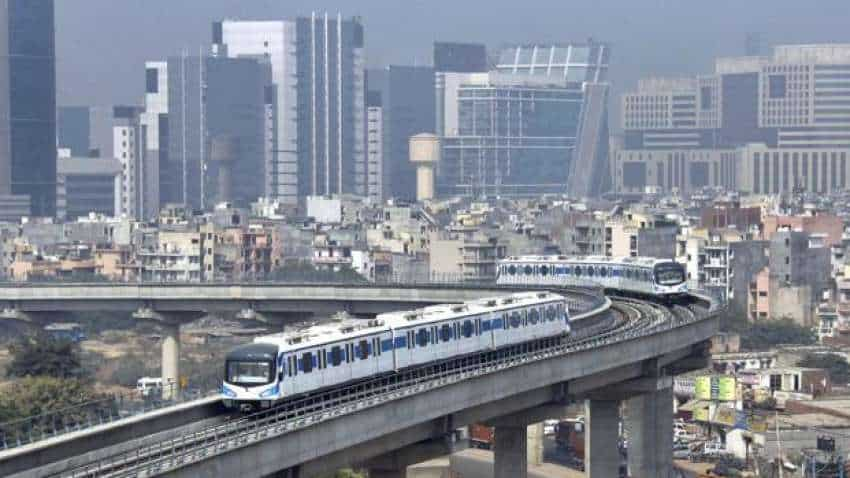Don't follow this Gurugram example; here is why
In its study, CSE found that PM2.5 and PM10 levels in these societies and in nearby areas (within 200 meter range), where DG sets were operated for several hours during power cuts, increased by 30 per cent and 50 per cent respectively. This means diesel generators used in societies is causing an alarming increase in pollution levels as these spike by 30 per cent during that period. And it is not so that the increased level of pollution becomes normal as soon as the DG sets are switched off, as the pollution level remains the same within the societies and the adjoining area for the next one hour.

Diesel generators that are used for supply of electricity during power cuts are massively damaging the environment in which we are living in, says think tank CSE. A report published by Center for Science and Environment (CSE) says that the air pollution levels increases by a whopping 30 per cent near residential societies and commercial buildings that use diesel generator sets for electricity in Gurugram.
This was the conclusion after CSE analysed the real-time air quality data of the residential societies in Gurugram where diesel generators are used during power cuts.
In its study, CSE found that PM2.5 and PM10 levels in these societies and in nearby areas (within 200 meter range), where DG sets were operated for several hours during power cuts, increased by 30 per cent and 50 per cent respectively. This means diesel generators used in societies is causing an alarming increase in pollution levels as these spike by 30 per cent during that period. And it is not so that the increased level of pollution becomes normal as soon as the DG sets are switched off, as the pollution level remains the same within the societies and the adjoining area for the next one hour.
Chandra Bhushan, Deputy Director General, CSE said, "We wanted to see the level of pollution in residential colonies where the DG sets are operationalised for hours to suffice the need of the power during power cuts. And Gurugram is one of such cities that suffers such power cuts for long hours. During our study, we found that the particulate matter (PM), the dangerous air pollutant, goes up by 30 per cent in the colonies where DG sets are used for 5-6 hours".
According to the CSE, the level of PM2.5 and PM10 levels were 130 microgram per cubic meter and 300 micrograms per cubic meter respectively in societies where generators were used for continuous 3-4 hours in a day. However, 1-2 hours before generators were used, the density of PM2.5 and PM10 were recorded at 100 micrograms per cubic meter and 200 micrograms per cubic meter.
On the other hand, the PM level is higher than normal in societies where the DG sets are operationalised for eight hours or more. The study was made in five residential areas of Gurugram, namely DLF Phase 1, DLF Phase 2, Devinder Vihar, New Colony and Time Residency.
CSE also says that the air pollution conditions in Gurugram, Delhi and Ghaziabad are similar. It says maybe we chose Gurugram as a sample for the study but its findings are also applicable for the entire Delhi-NCR region.
Chandra Bhushan says, "There will not be much difference in the results unless there is a major geographical change in the area. Broadly, the impact of pollution can be felt from the area where the DG set is assembled and with the same we conclude that our findings of Gurgaon in case of use of DG sets are also applicable in the complete Delhi-NCR region".
DS Pruthi, RWA collegium member, Sushant Lok Phase, Gurgaon says, "Problem-related to the power supply is making people opt for generators that contributes in increasing the pollution in the area. Solar power will not be able to meet the needs of big societies".
On the other hand, Haryana's Renewable Energy Department, HAREDA, in 2016 asked large industrial and commercial establishments to install solar panels on their roofs so that they can use the power generated from solar energy instead of diesel sets. However, this order was not applicable to residential buildings. However, CSE in its survey of big commercial buildings found the compliance level of HAREDA's order was just 5 per cent, while non-compliance level stood at 95 per cent.
Watch this Zee Business video
The CSE says that HAREDA and the power department of the state don't have mechanisms to find the compliance level and impose a penalty for not accepting the rule.
Get Latest Business News, Stock Market Updates and Videos; Check your tax outgo through Income Tax Calculator and save money through our Personal Finance coverage. Check Business Breaking News Live on Zee Business Twitter and Facebook. Subscribe on YouTube.
RECOMMENDED STORIES

Hybrid Mutual Funds: Rs 50,000 one-time investment in 3 schemes has grown to at least Rs 1.54 lakh in 5 years; see list

Rs 5,000 SIP for 40 years vs Rs 50,000 SIP for 20 years: Which can create higher corpus? See calculations to know it

18x15x12 SIP Formula: In how many years, Rs 15,000 monthly investment can grow to Rs 1,14,00,000 corpus; know calculations
07:18 PM IST










 DLF to invest Rs 8,000 crore to build super-luxury project in Gurugram
DLF to invest Rs 8,000 crore to build super-luxury project in Gurugram  M3M India expects Rs 4k crore revenue from new Gurugram housing project; investment at Rs 1,200 crore
M3M India expects Rs 4k crore revenue from new Gurugram housing project; investment at Rs 1,200 crore Centre to set up green coal plants in Gurugram, Faridabad
Centre to set up green coal plants in Gurugram, Faridabad Haryana CM flags off 50 new electric vehicles for Gurugram garbage collection
Haryana CM flags off 50 new electric vehicles for Gurugram garbage collection Gurugram-based supply chain startup 3SC raises $4 million from existing investor
Gurugram-based supply chain startup 3SC raises $4 million from existing investor